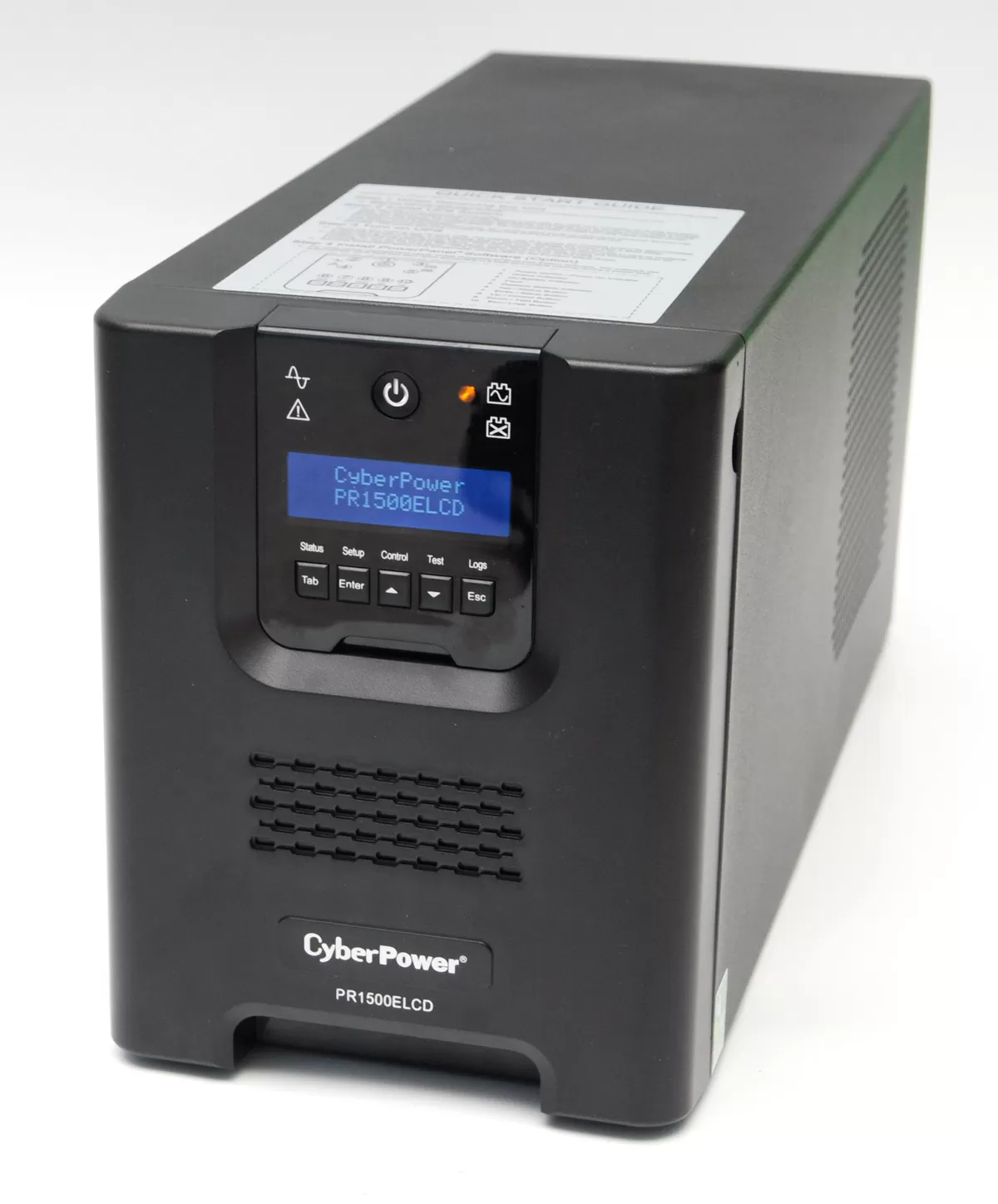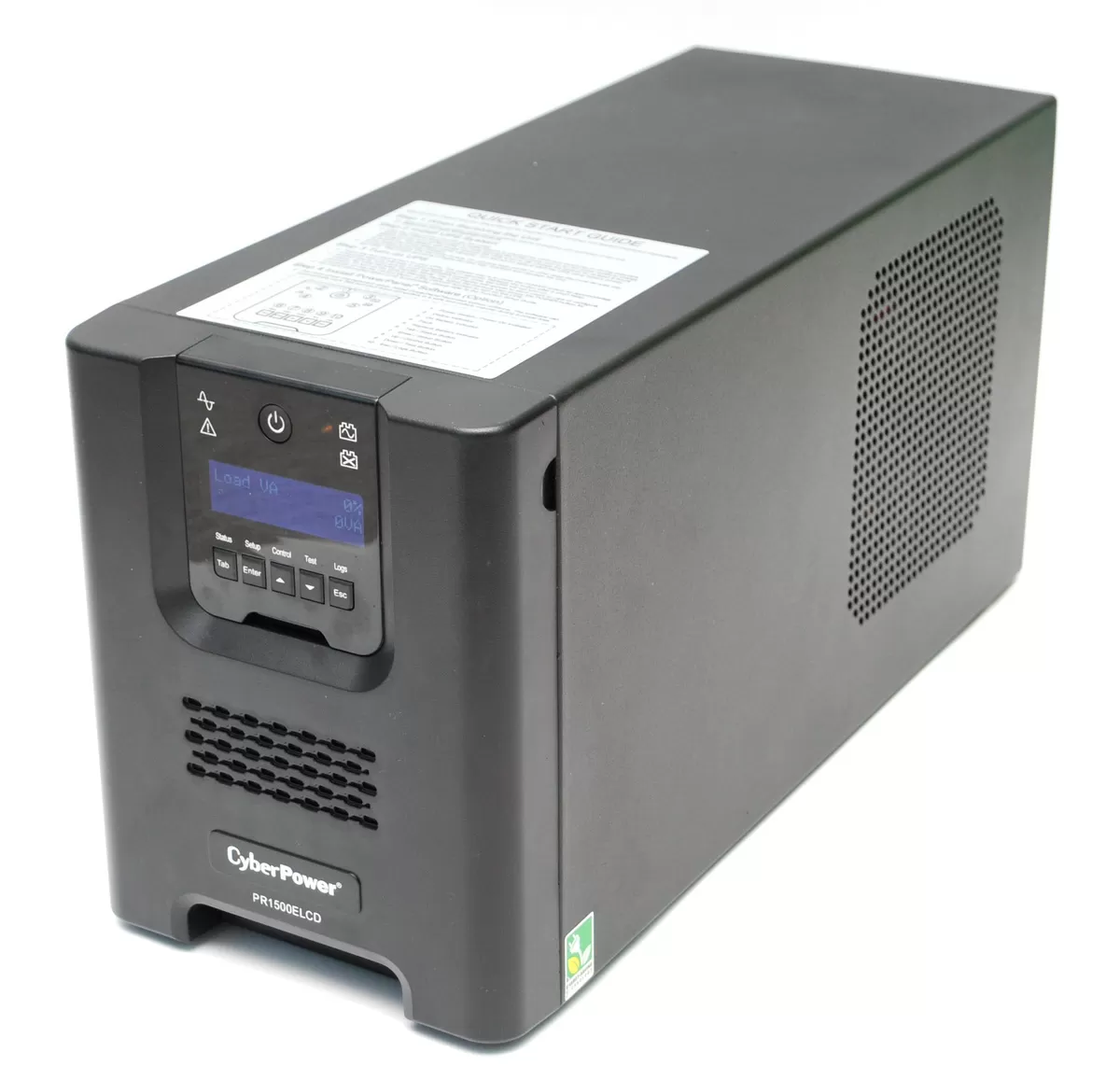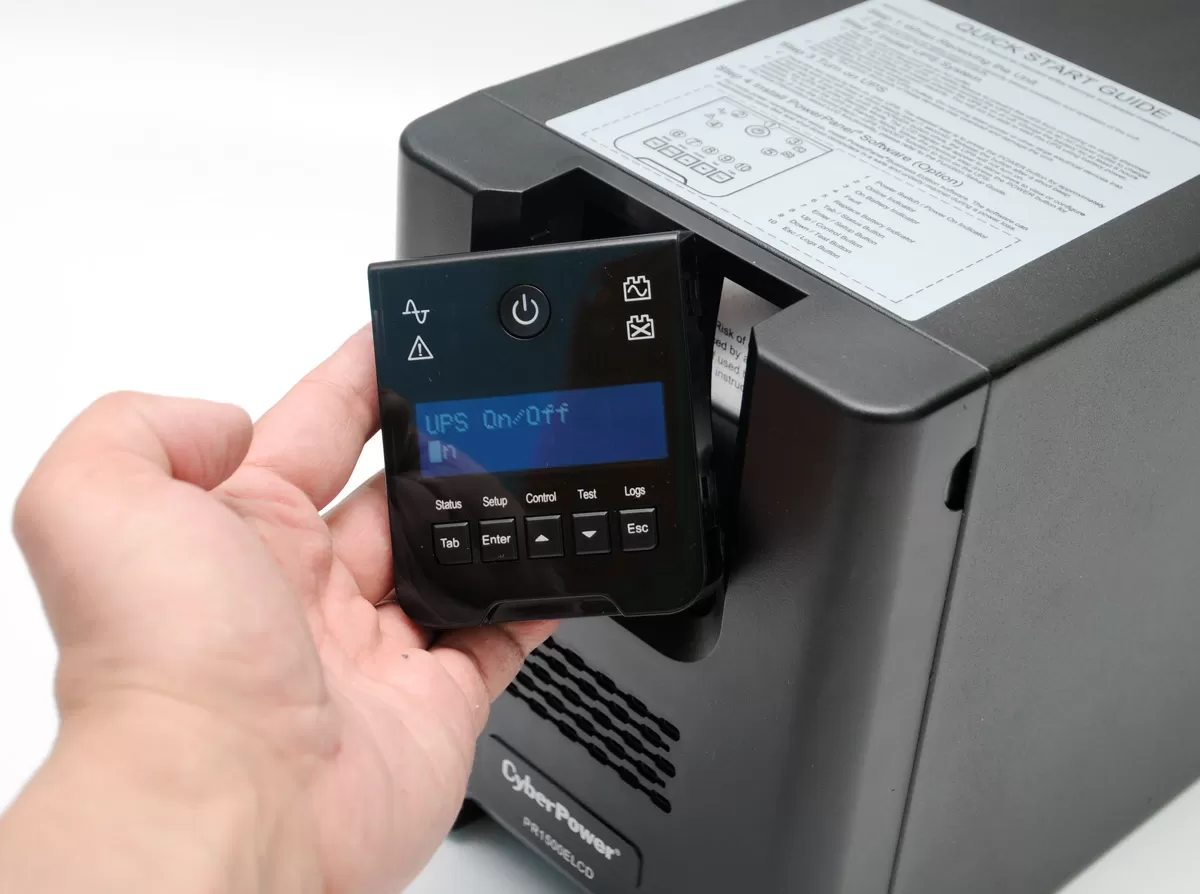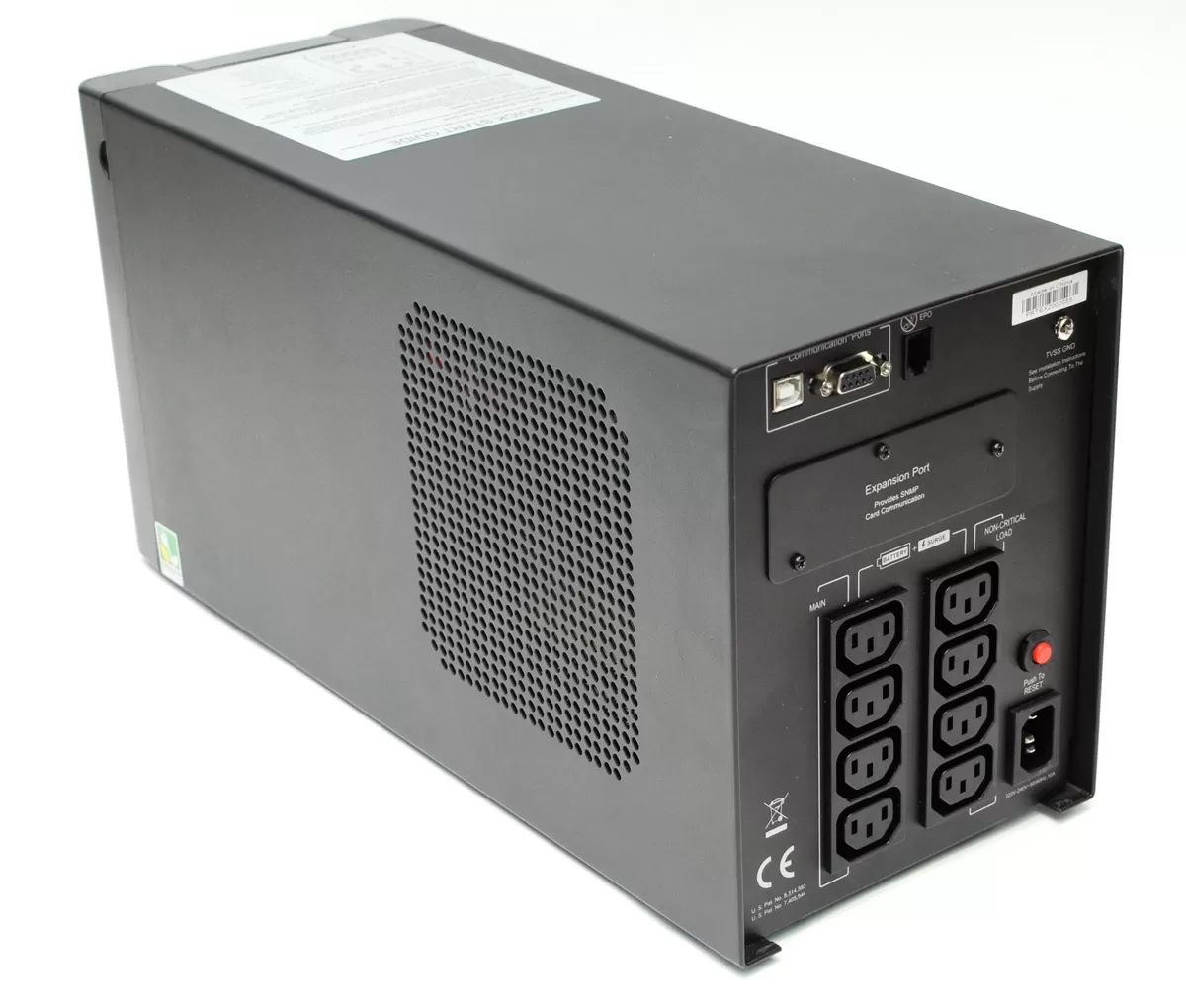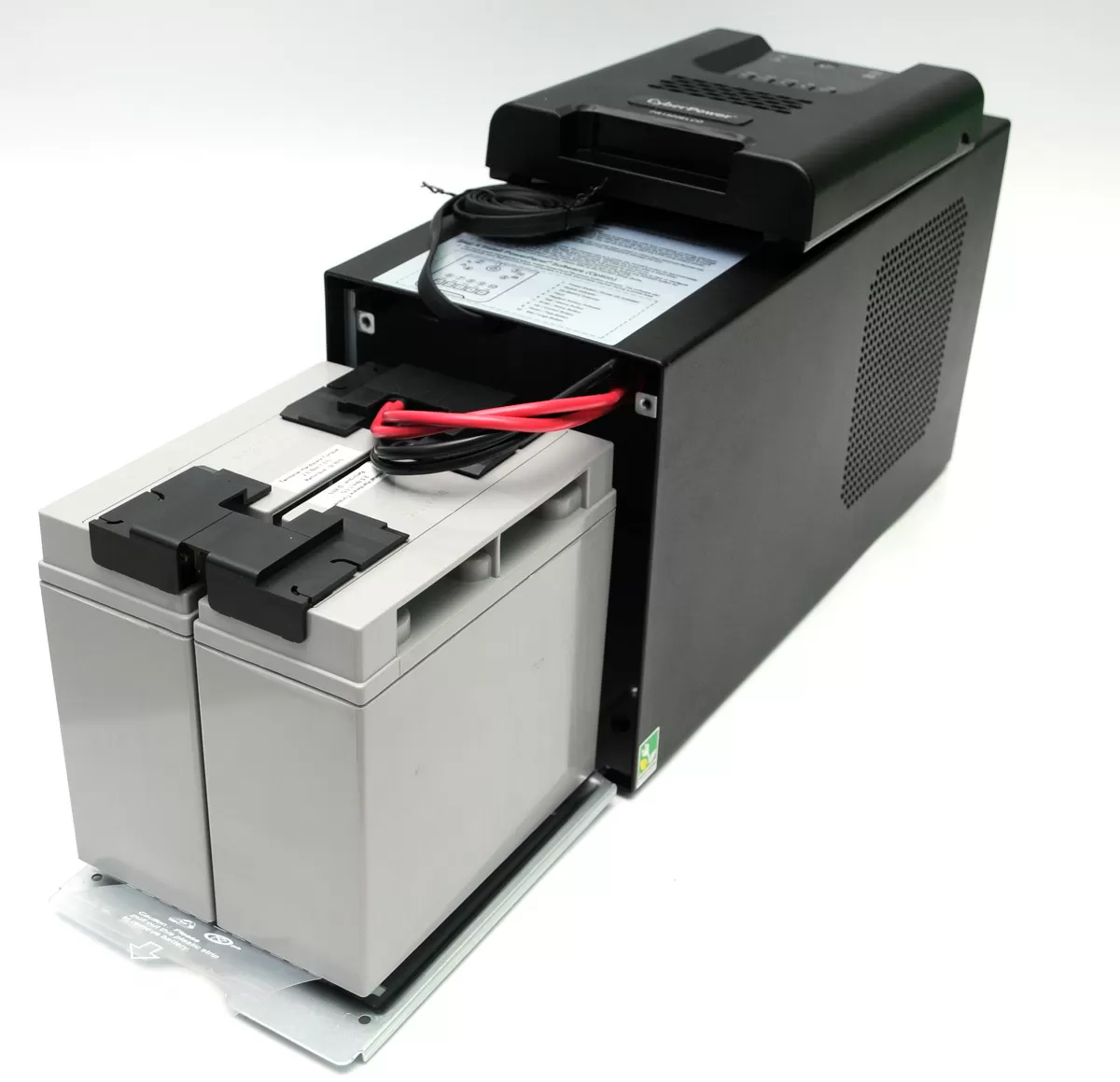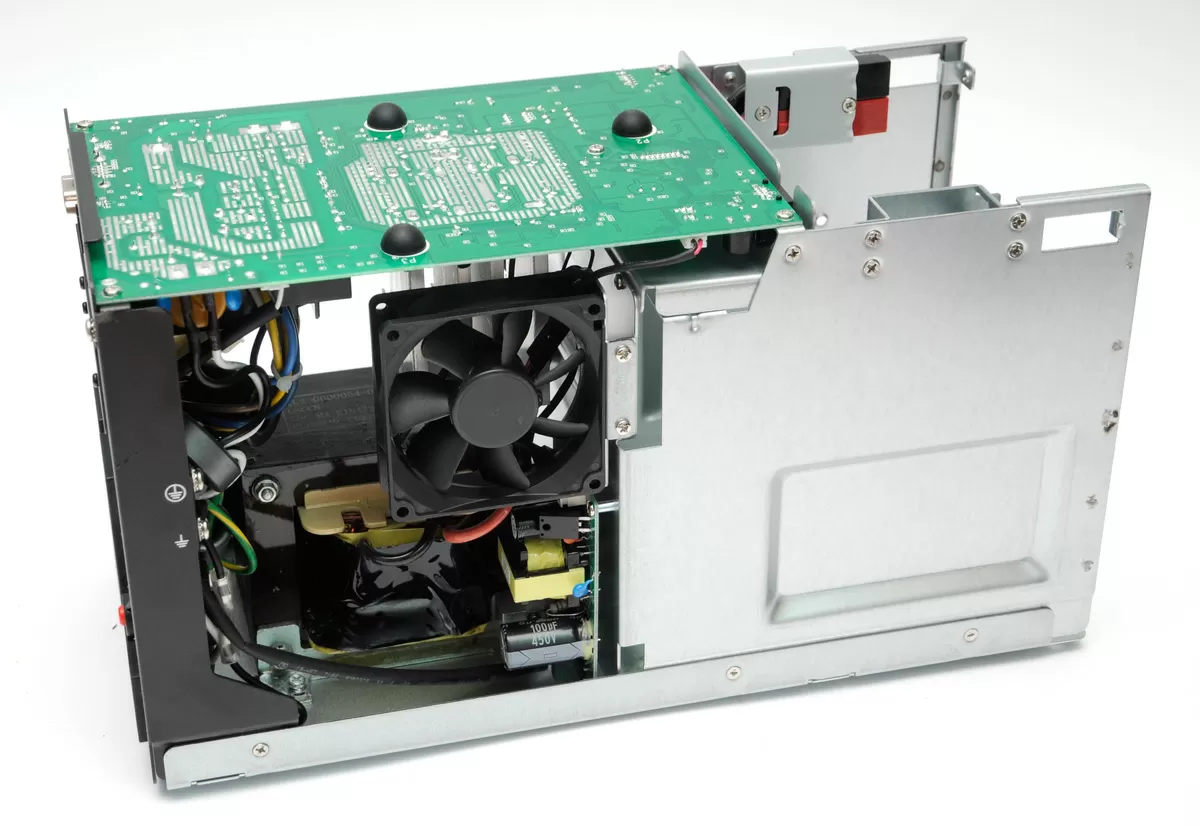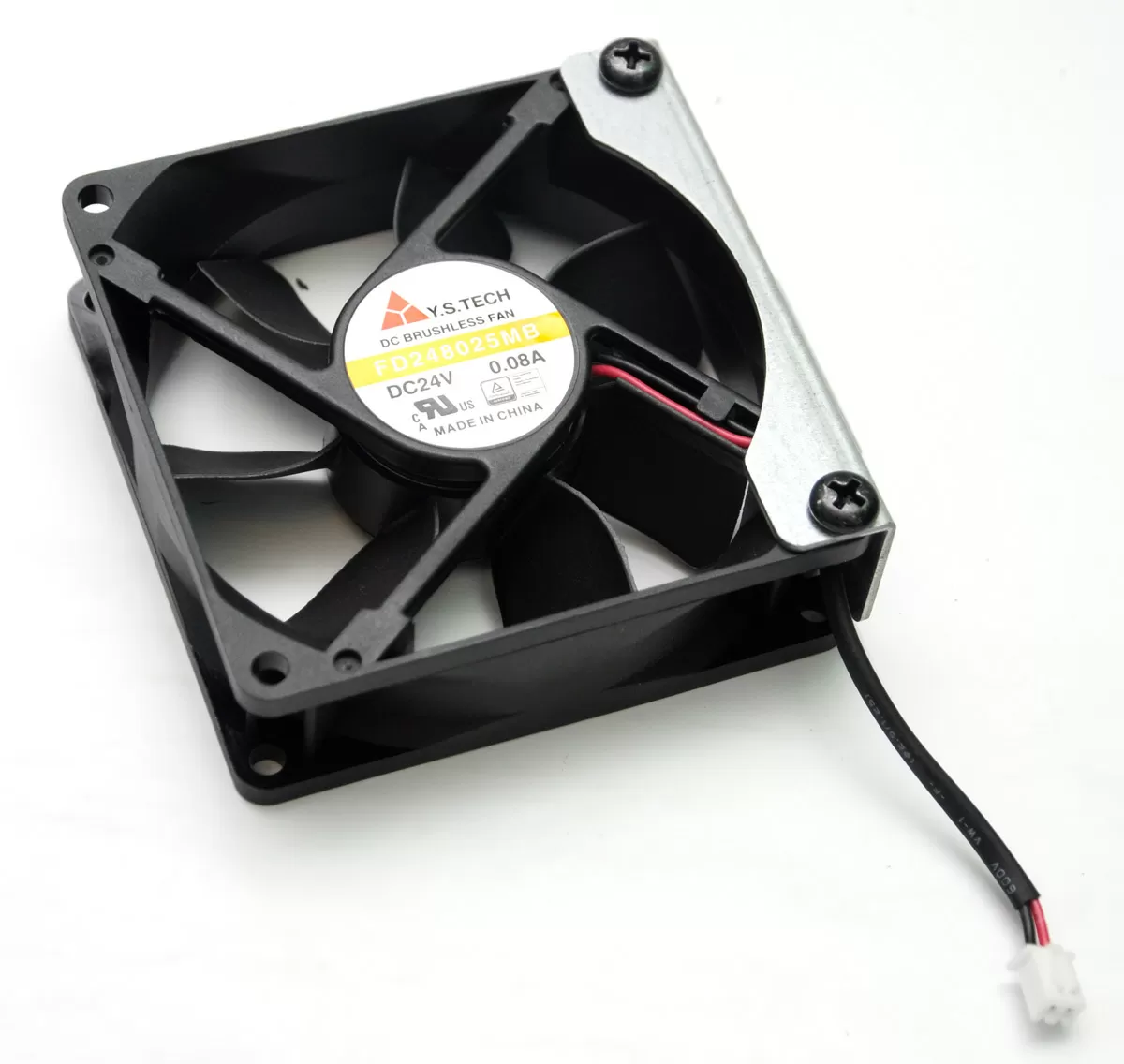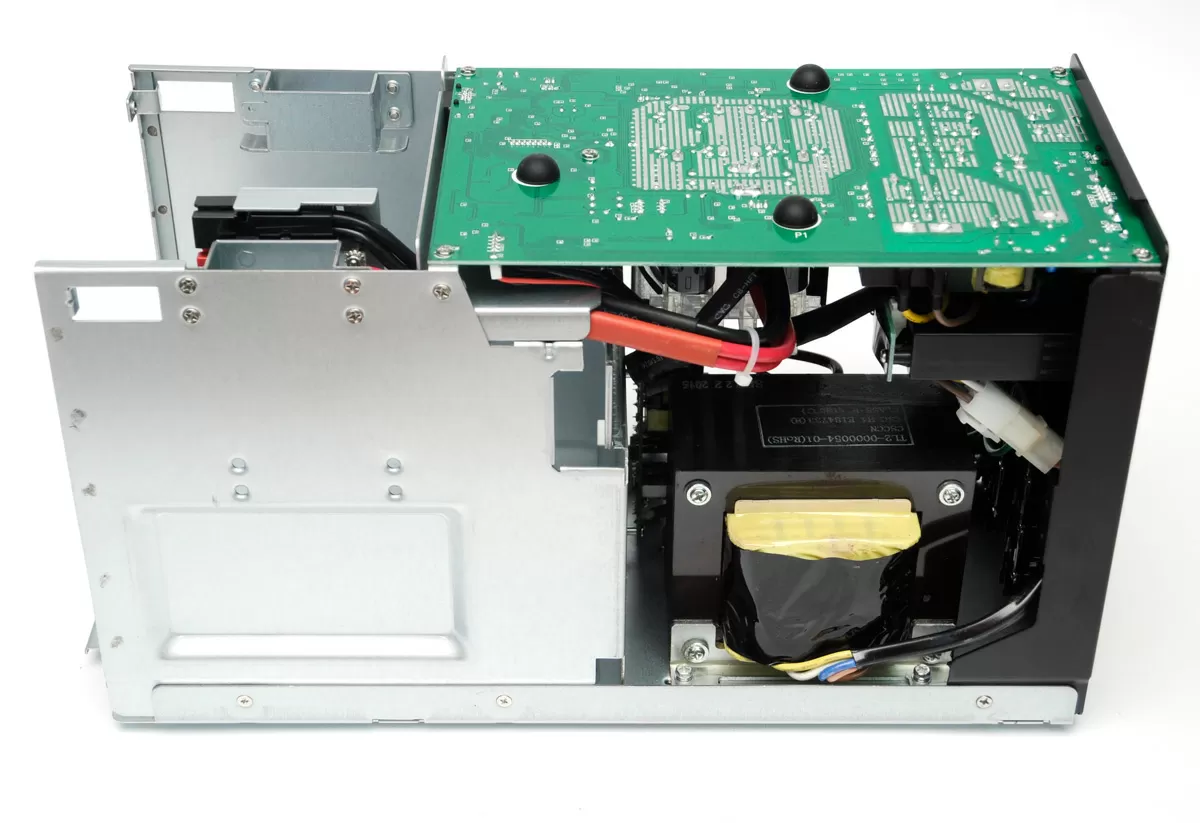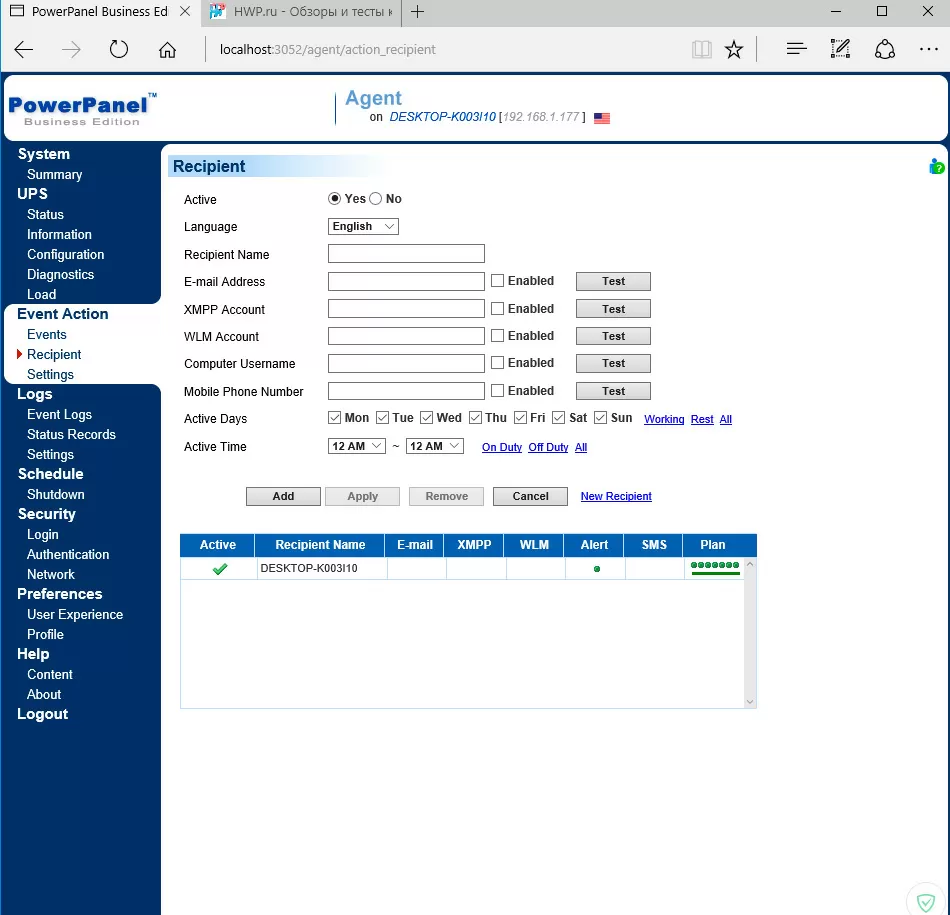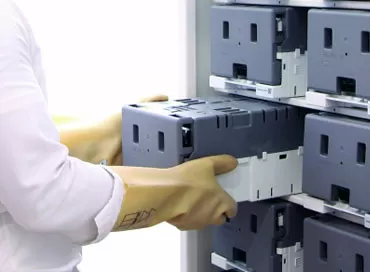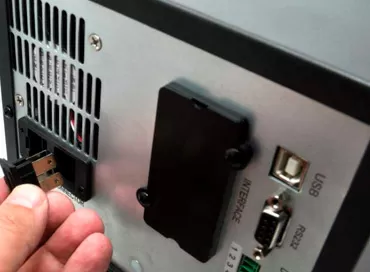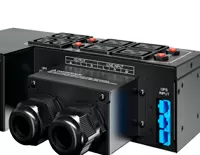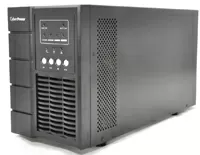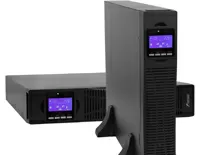CyberPower PR1500ELCD - Best-in-Class UPS
Almost all uninterruptible power supplies can be divided into two groups: the first - allow the connected computer to work for a few minutes in case of power failure, smoothly end programs and shut down; the latter are capable of surviving long power outages. The first - the majority, more than 95%, the second - a few. Well, it is unprofitable for UPS manufacturers to put powerful batteries in their devices. Therefore, only expensive devices designed for servers and workstations are awarded this privilege. And if a UPS, designed for long-term operation from batteries appears on sale, this is not just a holiday, but an excellent reason to consider it from all sides.
Like many others, we believed that progress in UPS was at a standstill. Over the past few years, the manufacturers of these devices have only managed to achieve a flat sine wave at the output when operating on battery power, make their devices compatible with modern computer power supplies, and increase efficiency. Time passed, and the old, proven APC SUA1500i remained irreplaceable. However, you can hardly find one thing that cannot be done better. This is what CyberPower decided to do and breathed new life into the well-known SUA1500i form factor. In the same turret-type case, with the same two batteries of 17 Ah each, with the same permissible load of 1500 VA, but taking into account the mistakes that APC made, and taking into account new technologies, they made a product, looking at which I would like to ask: "Is the king dead?".
What is it about the PR1500ELCD that impressed us during testing? Well, here's a short list:
- Pure sine wave output.
- Complete UPS control via removable LCD panel
- Fast and Slow Battery Charging
- Separation of loads into critical and non-critical
- 3-Stage AVR Switch Settings
- Low own power consumption
- RS232 + USB interfaces
CyberPower PR1500ELCD is the company's top product . It is designed for use in all situations where it passes through the load. The high power and capacity of the batteries make it possible to use it to protect gaming computers and workstations, and for video surveillance systems, where battery life is important. This is a universal device, unless it is placed in a server rack. But let's talk about everything in order.
Exterior and design
As already mentioned, CyberPower PR1500ELCD looks very similar to APC SMT1500i. Even in size (170x221x432) they differ by millimeters, moreover, the Cyberpower product is slightly shorter. Good or bad, I don't know. A UPS is not a cell phone, and the external similarity with competitors' models does not hurt the eye. And you can replace the old APC SUA1500I or SMT1500i with the CyberPower PR1500ELCD, as they say, with your eyes closed, even if size matters.
The UPS case is made of thick steel, which will withstand all the hardships and hardships that UPSs experience in offices under the table, in dusty households. rooms and other unpleasant places. Attention is drawn to the large ventilation grilles on the sides. Many high-power UPSs use a fan even when running on mains, which annoys home users who choose such an expensive product for residential use. In the case of the PR1500ELCD, you can rest assured - this UPS does not turn on the fan, if everything is in order with the mains supply, and even when charging the batteries in "economical" mode, it can work silently, which is, in fact, a huge plus. After all, how often does it happen with powerful UPSs? The light blinked - and the source begins to make noise for five minutes with a fan. There is no such thing here.
The highlight of the PR1500ELCD design is the removable control panel with LCD screen. First of all, I would like to say that five buttons and a 2-line screen allow you to completely configure the UPS without connecting it to a computer. This can be convenient if you plan to use it for systems where specialized software cannot be installed, for example, for video surveillance. CyberPower PR1500ELCD is the case when the control panel is not for beauty, but for device control and monitoring. A little later we will tell you what you can see and do with it. Well, to make it more convenient for you, it can be removed from the case...
The built-in cable allows you to move the control panel 1.5 meters from the UPS, and even mount it on the wall. This solves one of the most common problems with such devices, when, for example, the UPS must be placed "facing the wall", or when it is so far away in the cabinet that you cannot reach it. Personally, I have just such a situation - the UPS is facing close to the NAS, and I am surprised why until now no one has thought that all the controls of the device can be taken out in a small block on a wire ...
Let's look at the UPS from the back. For compatibility with ancient devices, the RS-232 port is retained (cable included), but most of the users will still use USB. The port for connecting the emergency button (EPO), which turns off everything at once, is a prerequisite for using a UPS in modern data centers, so it is present here. Expansion slot for SNMP cards, supporting two types of modules: RMCARD202 and RMCARD203. Both products are very rare , at the time of this writing, these SNMP cards have not yet been sold, but were about to appear in stores. So if you need these features, please contact your dealers before purchasing a UPS.
CyberPower PR1500ELCD has eight load outlets. They all provide protection against any power outages and are all powered by batteries. But these outlets are divided into two groups: normal load and non-critical load (Non-Critical Load, NCL). A non-critical load can be turned on later than normal when power is supplied from the mains (when the UPS is discharged), it can be turned off some time after a power outage in the mains to save battery power, it can simply be turned off from the menu programmatically or from the control panel. This way, you can turn off "dumb", "non-smart" devices from the UPS itself, so that more important devices can run on battery longer in the event of a power failure. What can act as a non-critical load? For example, network switches, which consume a lot, but are useless in an office without electricity.
To replace the batteries, the UPS can be left on. One has only to pull the front panel towards you, it can be easily removed, and unlike APC products, the cable to the control panel does not interfere and does not threaten to come off during this procedure. We unscrew the two screws with our hands - and open the battery compartment. Two 12V batteries with a capacity of 17 Ampere hours are connected in series.
CyberPower does not supply battery packs for the PR1500ELCD , although they are listed on the website as RBP0023. So you can, with a clear conscience, purchase two similar batteries for replacement, rearrange the terminals on them from the old ones - and install them in the UPS. Once charged, you will have to calibrate the battery life for the smart-shutdown function to work properly - and you're done.
What interesting things can you see by taking apart the uninterruptible power supply? Fan with dimensions 80x80x25 mm with an operating voltage of 24 V. It works in the following cases:
- when the UPS is running on battery
- when the UPS is operating in AVR mode
- when the UPS is charging batteries in boost charge mode
- when the UPS overheats (?)
In all other cases, the fan does not work, so you will hardly have to change it sometime. By the way, even at an ambient temperature of 33 degrees Celsius, when the UPS was running on mains, the fan did not turn on. So it is possible that it does not have any switching on when it overheats.
A fan blows over very large diode radiators. Perhaps due to their size, you can not be afraid of UPS overheating.
CyberPower PR1500ELCD is assembled accurately and efficiently. It uses components from large manufacturers with a good reputation. There is absolutely nothing to find fault with.
Settings and functions
As befits a modern top-end processor-controlled device, Cyberpower PR1500ELCD allows you to customize itself. Perhaps one of the most important parameters is the output voltage range. You can set the maximum and minimum voltage that the UPS can supply to the load. When the specified threshold is crossed, automatic voltage regulation will be triggered or battery power will be supplied. What is it for? I think that for those rare cases when the power in the network is constantly low or high, and the load is not sensitive to this (like most modern computers). The adjustment range is small - 9 Volts, and is within the safe limits according to standards.
The sensitivity to voltage drops is also adjusted. It can be low, high or medium.
As already mentioned, you can program non-critical loads to be switched on late or early off. Moreover, you can turn it off not only in time (for example, 5 minutes after switching to battery power), but also when a certain battery charge is reached.
The UPS provides a lot of useful information. Including - the electricity consumption of the connected load for the entire time, the date of the last battery replacement, the estimated battery life, input and output voltages, power supply to the load (in Volt-Amperes) and its power (in Watts). And the operating mode of the UPS itself. This can be powered by the AVR, battery charging, battery powered, or mains powered.
By the way, CyberPower PR1500ELCD has a very useful function for selecting the battery charging speed - fast and economical. When fast, the batteries charge from zero to 100% in about 3 hours. In this mode, the UPS's own power consumption is approximately 160W and the fan is running. The economy mode is much more important - although it charges the batteries in almost 8 hours, in this mode the UPS consumes about 60 W, and the fan does not work. You need to use saving charging in the following cases:
- When the UPS is powered by a backup generator and every watt counts
- When the UPS is standing in an enclosed room or cabinet and Fast Charge quickly increases the ambient temperature
- When the UPS is at home and noise is undesirable
When the mains voltage is normal, the LCD screen on the uninterruptible power supply goes out.
Soft
CyberPower PowerPanel Business Edition software is designed for a business structure. This is not just a small window with voltage and load values, it is a client-server application that works when the UPS is connected to a computer via USB or SNMP card. It allows you to configure all those parameters as through the screen, but remotely, as well as enable notifications by E-Mail or SMS for various situations.
Externally and structurally, CyberPower PowerPanel Business Edition is a copy of APC PowerChute, probably compiled from the same sources that the processor manufacturer provided for the UPS. But this does not make the software worse.
Particularly pleased with the ability to prevent disconnection of the load connected to a particular outlet. This is a great addition to the UPS's built-in critical and non-critical load selection, only this time through the software environment.
In principle, to monitor the status of the UPS and connected loads, as well as to view the event log, the capabilities of PowerPanel Business Edition are more than enough. As with APC PowerChute, statistics and analytics are lacking. Well, at least the number of consumed kW * h.
It should be added that PowerPanel Business Edition exists not only for Windows, but also for Linux.
Testing
We begin testing, traditionally, with the operation of the AVR system (transformer). Of course, we expected something unusual from a device of this level, but the results impressed us. To be honest, I have never seen such a schedule.
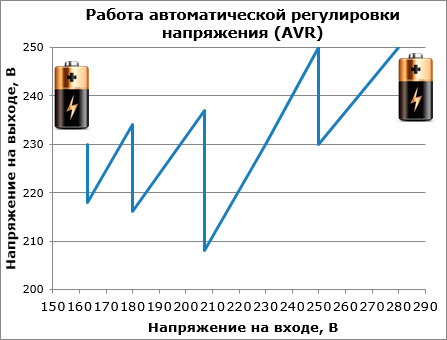
AVR working
As we can see, the transformer has one step of regulation of the increased voltage at the input, and allows it to rise to 250 V. This is a typical, but the best indicator, at the level of maximum permissible values according to standard. Most modern UPSs believe that 250V for connected equipment is the norm, and low voltage for modern equipment is much worse than high voltage.
And now, in the low voltage zone of CyberPower PR1500ELCD, everything is simply gorgeous. There are 2 AVR stages available to you, holding voltages from 218 V to 235 V. When the input voltage is below 160 V and above 280 V, the UPS transfers to battery power.
Note that the lowest AVR stage appears to be redundant. If it was not for it, at 160 V at the input, the output voltage would be somewhere around 205 V, which is also the norm, but the manufacturer decided to play it safe. Well done. Haven't met anyone worried about quality in a long time.
Own power consumption. We tested this setting in two charging modes and when operating in AVR mode.
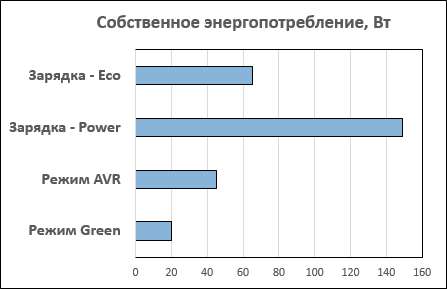
Own energy consumption: ECO charging, Power charging, AVR working, Green standby
The diagram shows how important “eco” charging is. Even longer, but with less heat and no noise. Why the AVR increases its power consumption so much remains a mystery.
Battery life is typical for two high-power 17Ah batteries:
- When powered by a load of 100 W -180 minutes
- With a load of 200 W - 90 minutes
- At 300 W load - 50 minutes.
During testing, an unpleasant feature came to light - we were not able to calibrate the UPS for the normal determination of the battery life. It is calibrated at a load above 20%, and apparently, it remembers and uses the battery life with the calibration load, and when it decreases further, it does not add time. It is difficult to say how significant this is, but it is probably a matter of the firmware that the manufacturer can fix.
Conclusions
CyberPower PR1500ELCD is, first of all, an excellent replacement for the unreasonably expensive counterparts from APC. In the segment of UPSs with powerful batteries, there is almost no competition, and the choice between two or three models can be considered good luck. At the same time, CyberPower PR1500ELCD turns on the fan only when there is something wrong with the mains voltage, it is energy efficient and modern. The presence of a function of non-critical loads, a convenient removable control panel, software focused on a business user - all this suggests that today's UPS is very different from those that were made 10 years ago. And don't discount your progress when choosing even such a simple device.
True, the PR1500ELCD also has drawbacks that you should keep in mind when buying: our problem with unsuccessful calibration of the device may not affect you, but it will be as difficult for you to acquire an SNMP card as for everyone else.
But if you take a device for yourself, and it is important for you that it keeps it from batteries for a long time, then there is nothing to think about - in terms of price, battery capacity and power, CyberPower PR1500ELCD is out of competition.
Mikhail Degtyarev (aka LIKE OFF)
06/28/2016

